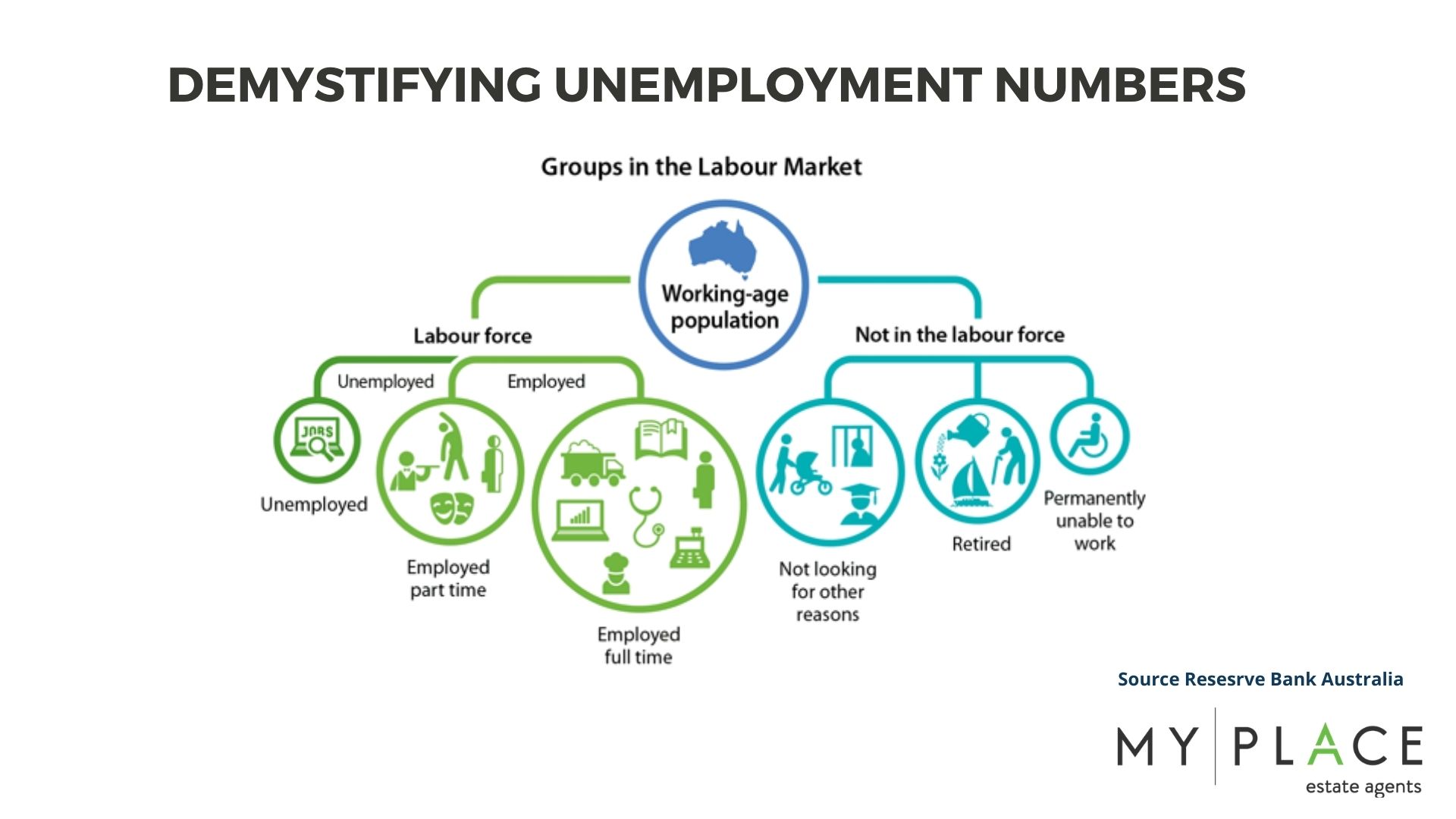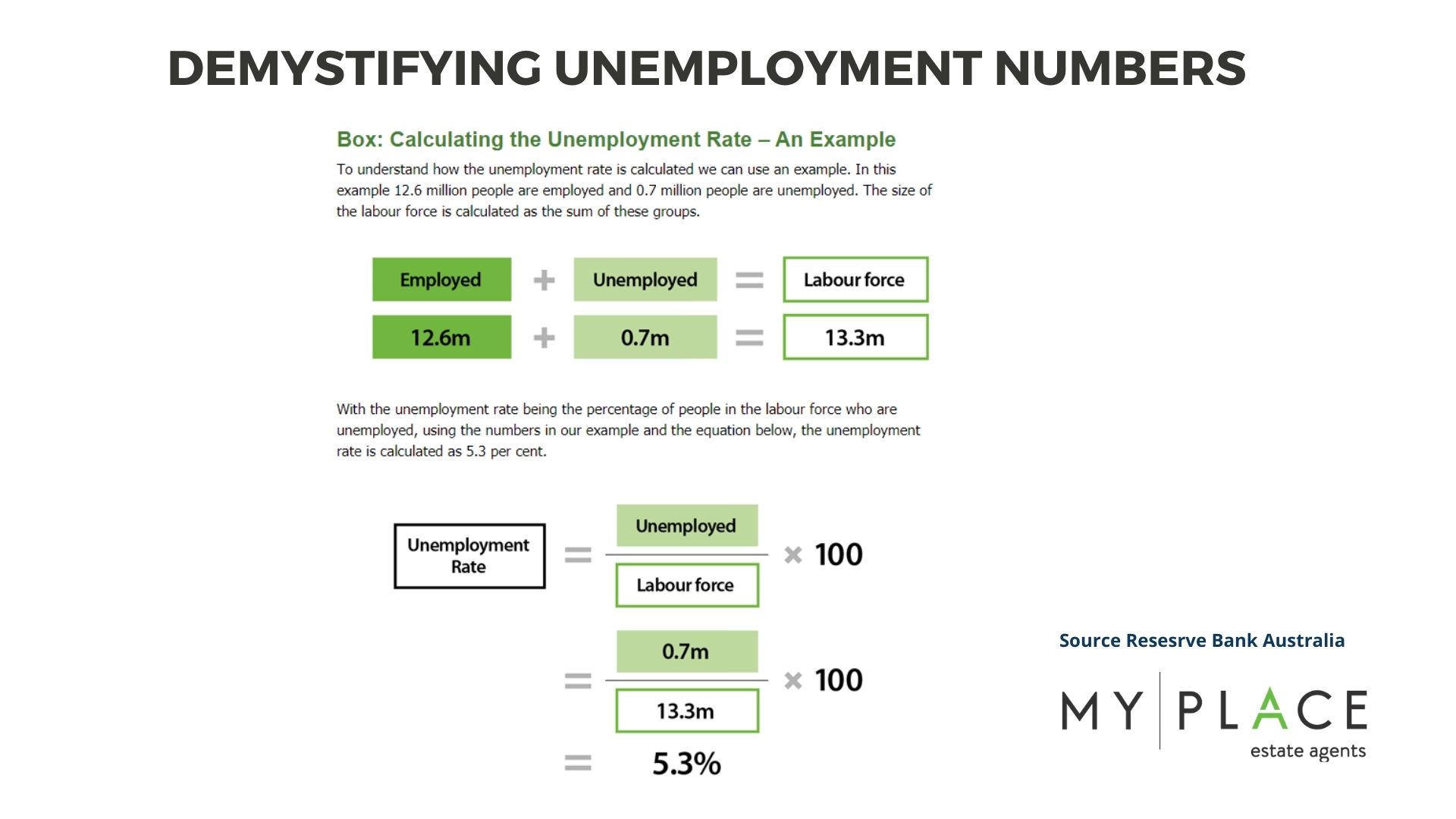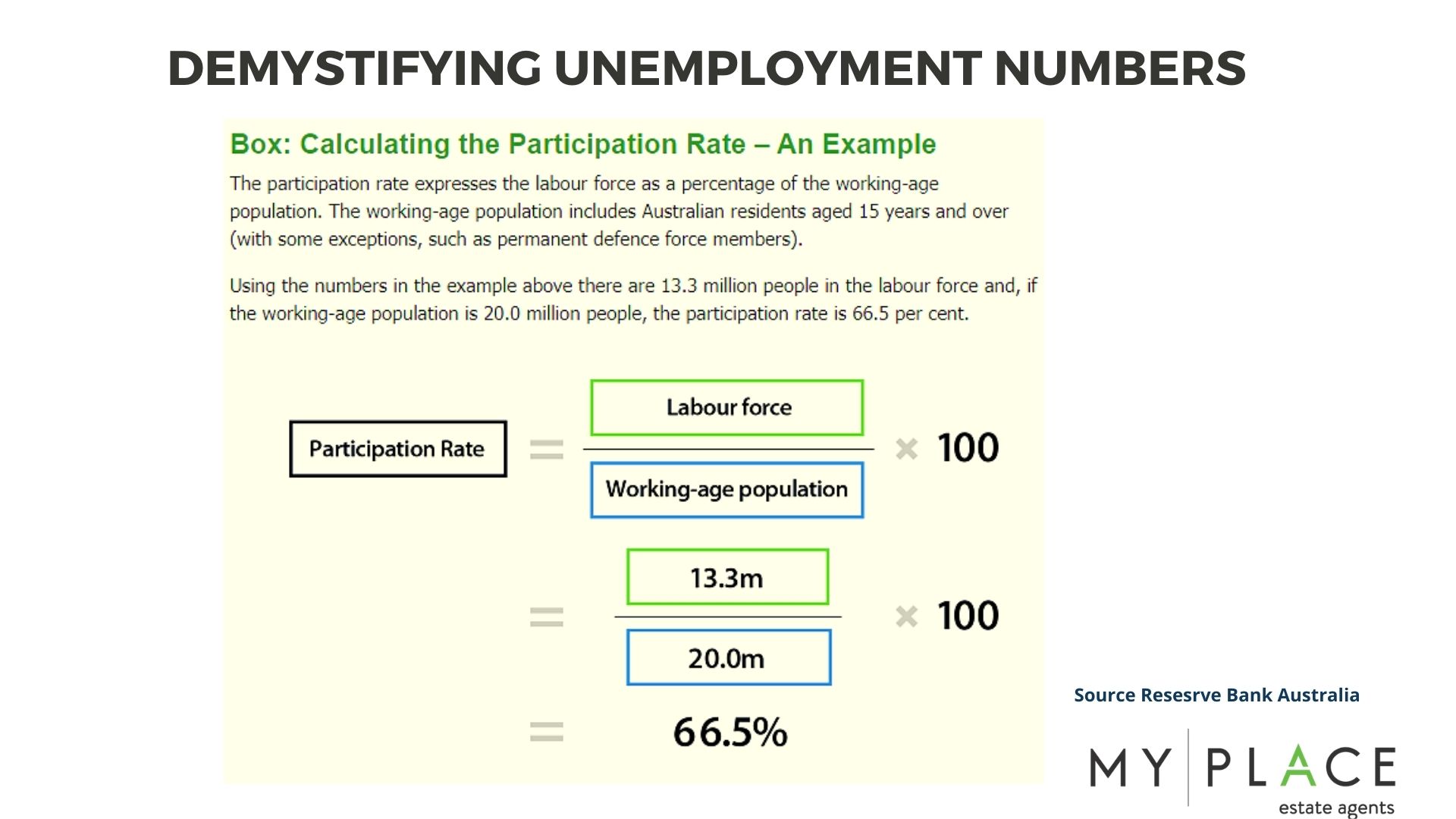|
With all this talk about unemployment and the different terms bounded around within it, I thought it might be helpful to explain what the terms mean, how unemployment is calculated, what is the participation rate and who is considered underemployed. This explainer outlines two key topics related to unemployment. 1.How is the unemployment rate measured? 2. What are the main types of unemployment?
How is the unemployment rate measured? Unemployment occurs when someone is willing and able to work but does not have a paid job. The unemployment rate is the percentage of people in the labour force who are unemployed. Consequently, measuring the unemployment rate requires identifying who is in the labour force. The labour force includes people who are either employed or unemployed. Figuring out who is employed or unemployed involves making practical judgements, such as how much paid work someone needs to undertake for them to be considered as having a job, as well as actually counting how many people have jobs or not. In Australia, the Australian Bureau of Statistics (ABS) is responsible for collecting labour market data. The ABS conducts a survey each month – called the Labour Force Survey – in which it asks around 50,000 people about their participation in the labour market. As part of this survey, the ABS groups people aged 15 years and over (the working-age population) into three broad categories:
Once the number of people in each of these categories has been estimated, the following labour market indicators can be calculated:
Other Types of UnemploymentThere are some other types of unemployment that are also important to consider. In particular, the underemployment rate can be thought of as a complementary indicator to the unemployment rate when thinking about conditions in the labour market.
Source RBA Latest Labour Force Figures ABS: https://www.abs.gov.au/statistics/labour/employment-and-unemployment/labour-force-australia/latest-release |


